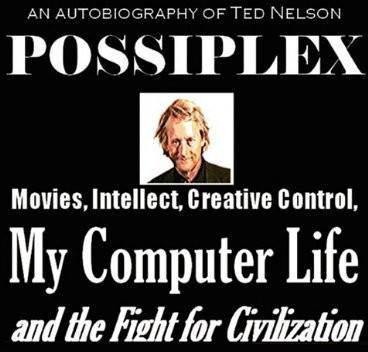
Memory Machines: The Evolution of Hypertext
by
Belinda Barnet
Published 14 Jul 2013
When Nelson and van Dam set out to create a hypertext system, they decided that their model of association would be personalized, with fewer restrictions. ‘HES was also single-user and personal because there was only one graphics display at Brown – ours […] Unimaginable today’ (van Dam 2011). The Hypertext Editing System was SEEING AND MAKING CONNECTIONS 97 designed for personal text editing, information retrieval and nonsequential writing. This is one of the differences between ours and Engelbart’s system. That system imposes a hierarchical tree structure upon all textual contents, in contrast to our unstructured ‘string’ of text approach. While many benefits accrue from this automatic structuring, it does reflect an arguable theory of human thought.

The Internet Is Not the Answer
by
Andrew Keen
Published 5 Jan 2015
But this project to network the world wasn’t quite complete. There was one thing still missing—Vannevar Bush’s Memex. There were no trails yet on the Internet, no network of intelligent links, no process of tying two items together on the network. The World Wide Web In 1960, a “discombobulated genius” named Ted Nelson came up with the idea of “nonsequential writing,” which he coined “hypertext.”40 Riffing off Vannevar Bush’s notion of “information trails,” Nelson replaced Bush’s reliance on analog devices like levers and microfilm with his own faith in the power of digital technology to make these nonlinear connections. Like Bush, who believed that the trails on his Memex “do not fade,”41 the highly eccentric Nelson saw himself as a “rebel against forgetting.”42 His lifelong quest to create hypertext, which he code-named Xanadu, was indeed a kind of rebellion against forgetfulness.

Possiplex
by
Ted Nelson
Published 2 Jan 2010
. * I am not sure that the genre of parallel documents occurred to me in the 1960-1 period. • The Manifest Destiny of Literature Obviously, writings like this would be far superior to ordinary writings on paper, and nobody would want the old forms or writing any more. But of course the old writings themselves could be brought forward as re-usable content for this new genre. Nonsequential writing—the term “hypertext” had not yet been coined—was obviously the manifest destiny of literature. I foresaw a sweeping new genre of writing with many forms of connection; and of course that was the genre in which I would want to create all my own works of the future. Any reader who still thinks these ideas have any resemblance to the World Wide Web should probably take a hot bath.